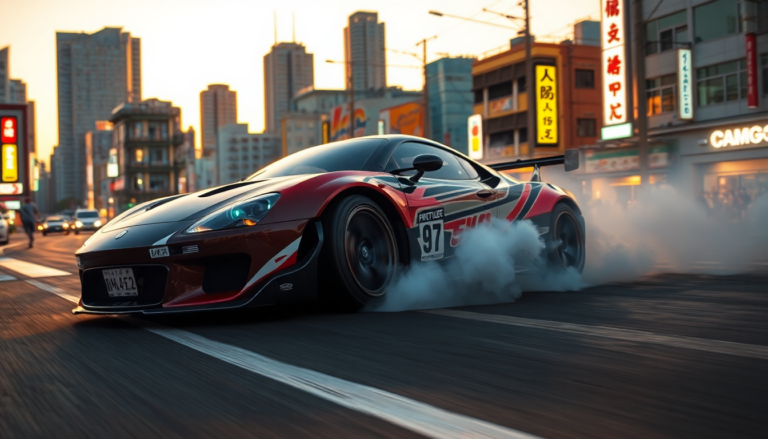Argomenti trattati
The world of racing games has always had a special place for drifting, but few titles embrace it with the depth and passion that JDM does. Set to release on May 21, 2025, this open-world racer not only brings back the nostalgia of classic Need for Speed games, but it also aims to interweave the intricate narratives of Japanese car culture into its gameplay. With a price tag of $35, JDM is poised to attract both veteran gamers and newcomers alike.
Capturing the spirit of drifting
When you think about drifting in video games, it’s hard not to reminisce about those exhilarating moments in the early 2000s, where the Need for Speed franchise made drifting not just a mechanic, but a cultural phenomenon. JDM seems to understand this nostalgic longing, packing its roster with cars that were once the stars of the NFS covers. But here, the game aims higher—much higher. It’s not just about racing; it’s about immersing players in the vibrant world of drifting, honoring its Japanese roots while presenting a story that feels personal and engaging.
JDM introduces a narrative that revolves around an outsider striving to integrate into a tight-knit Japanese community. Players will navigate the complexities of not just racing, but also running a sushi delivery business intertwined with an unsolved murder mystery. This isn’t just another racing game; it’s a life simulation wrapped around the exhilarating experience of drifting.
Game mechanics and challenges
At the heart of JDM lies its handling model—crucial for delivering an authentic drifting experience. The game offers both arcade-style and simulation handling options, allowing players to choose how they wish to experience the open world. Yet, the question remains: can it balance the thrill of drifting with the day-to-day driving required in the game? Unfortunately, many players might find that conventional driving around the narrow streets feels somewhat clunky, especially during track events.
But once you hit that drift, it’s pure bliss. There’s something remarkably satisfying about holding a drift angle as you navigate through turns, reminiscent of nailing a grind in Tony Hawk’s Pro Skater. You can feel the passion that the developers have for drifting, which adds a layer of charm to the game. It’s this passion that makes you care about the mechanics, even if the more mundane aspects of driving can be a bit awkward.
So what are the rough edges?
Every ambitious project has its quirks, and JDM is no exception. As much as I want to root for this game, I can’t ignore the translation issues and optimization hiccups that rear their heads more often than they should. There are moments when loading screens linger a bit too long, making you question if the game is working or just on a coffee break. The map can also be a bit cluttered, making navigation tricky at times.
Moreover, some mission designs feel a bit forced, particularly those that veer into the realm of fan service—like impressing an anime character with your drifting prowess. These moments do little to enhance the gameplay experience and can be a distraction from the core racing mechanics.
What lies ahead for JDM?
Despite its rough edges, JDM holds the potential to carve a unique niche in the racing genre. The game’s approach to storytelling and mission design is inventive, with tasks that range from sushi delivery runs to dueling local racers. It’s this diversity that keeps the gameplay fresh and engaging.
As the game evolves, I’m hopeful that the developers will address the performance issues and refine the user experience, allowing the true essence of JDM to shine through. For now, it’s a charmingly imperfect project that, while not likely to dethrone Need for Speed, certainly places its flag firmly in the world of drifting games.
As someone who deeply appreciates the nuances of gaming, I find myself rooting for JDM. It’s not just a game; it’s a love letter to drifting culture. Let’s keep an eye on this one—it might just surprise us all.

